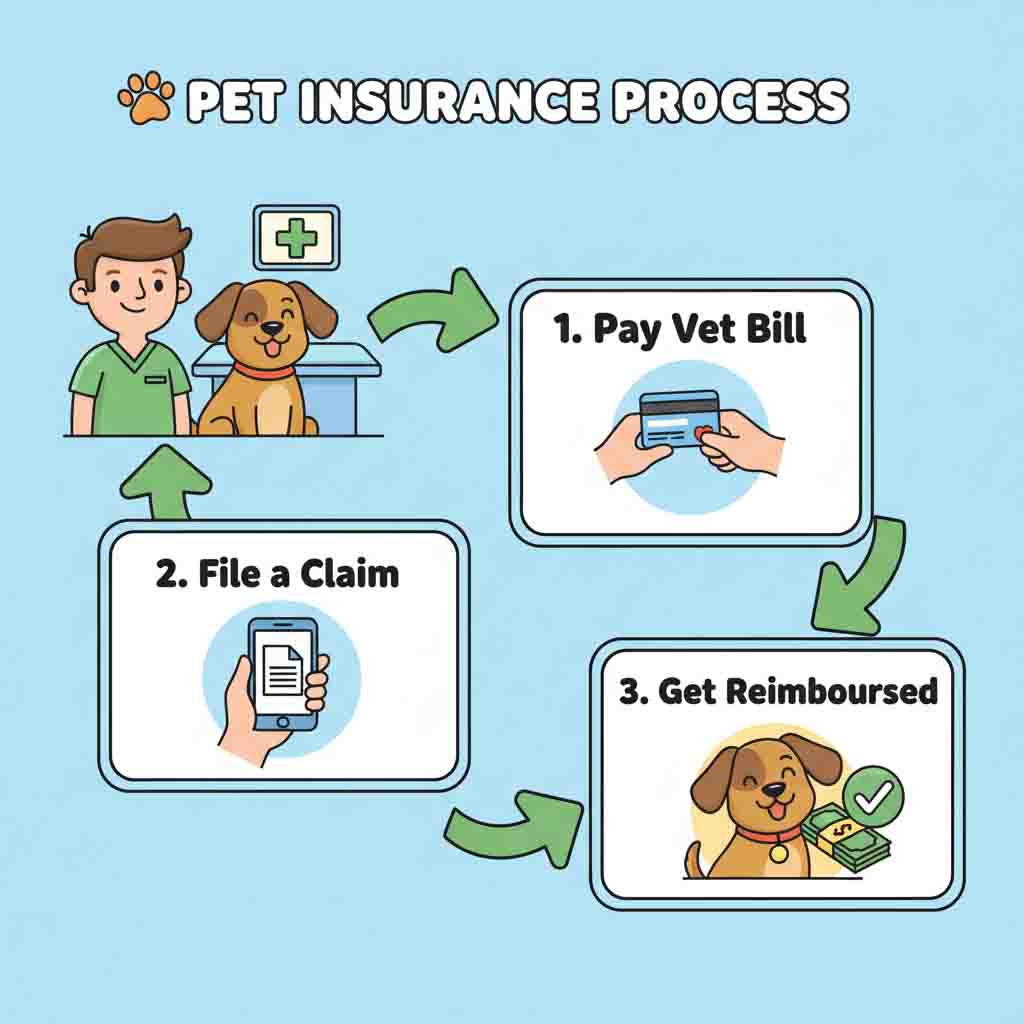Table of Contents
-
Understanding Pet Insurance Fundamentals
-
How Insurance Mechanisms Actually Work
-
Policy Selection Process
-
Implementation Framework
-
Common UK Insurance Missteps
1. Understanding Pet Insurance Fundamentals
Core Concept and Purpose
Pet insurance represents a financial risk management tool designed to mitigate unexpected veterinary costs through systematic premium payments. Unlike human health insurance, most pet policies operate on a reimbursement model where owners pay veterinary fees directly and subsequently claim compensation from their insurer according to their coverage terms.
Key Insurance Components Explained
-
Premium: The regular payment made to maintain active coverage, typically monthly or annually
-
Excess: The initial amount you pay toward each claim before insurance coverage activates
-
Coverage Limit: The maximum amount an insurer will pay annually or over your pet’s lifetime
-
Waiting Period: The mandatory delay between policy inception and coverage activation for certain conditions
Q: Is pet insurance truly necessary for UK pet owners?
A: Given that unexpected veterinary treatments can cost thousands of pounds and the UK’s private veterinary system requires immediate payment, insurance provides crucial financial protection against these unpredictable expenses.
2. How Insurance Mechanisms Actually Work
Risk Assessment Fundamentals
Insurers employ actuarial science to calculate premium levels based on statistical risk factors including breed-specific health predispositions, geographical location within the UK, and the pet’s age at enrollment. This risk-based pricing explains why premiums vary significantly between different animals and owners.
The Claims Process Demystified
The standard reimbursement procedure involves:
-
Paying your veterinary practice directly for treatment
-
Submitting the itemised invoice to your insurer
-
Receiving reimbursement for covered costs minus any applicable excess
-
The process typically requires 5-15 business days for completion
Policy Structure Variations
UK pet insurance market typically offers three primary coverage tiers:
-
Accident-Only: Basic protection covering injuries from unexpected events
-
Time-Limited: Conditions covered for 12 months from first treatment
-
Lifetime: Ongoing coverage for chronic conditions throughout policy renewal
Q: Why do premiums increase as my pet ages?
A: Older pets statistically require more veterinary care, and insurers adjust premiums to reflect this increased risk, similar to how car insurance costs change with driver age and experience.
3. Policy Selection Process
Needs Assessment Framework
Begin by evaluating your pet’s specific risk profile considering:
-
Breed predispositions to hereditary conditions
-
Lifestyle factors including activity level and environment
-
Financial capacity to absorb unexpected veterinary costs
-
Personal risk tolerance regarding healthcare decisions
Coverage Comparison Methodology
Systematically evaluate policies using these criteria:
-
Covered conditions and exclusions specificity
-
Claim limits structure (per condition, annual, or lifetime)
-
Excess amounts and whether they’re fixed or percentage-based
-
Complementary treatment inclusion (physiotherapy, behavioural therapy)
-
Policy longevity protections against coverage cessation for chronic conditions

Provider Evaluation Checklist
-
Financial stability and claims payment history
-
Customer service accessibility and reputation
-
Policy wording clarity and transparency
-
Renewal terms and premium increase history
Q: Should I choose the cheapest available premium?
A: Not necessarily—extremely low premiums often correlate with restricted coverage, higher excess payments, or limited annual benefits that may prove inadequate when facing serious health conditions.
4. Implementation Framework
Optimal Enrollment Timing
The most advantageous period to secure coverage is when your pet is young and healthy, typically between 8 weeks and 3 years of age. Early enrollment minimizes exclusions for pre-existing conditions and locks in lower premium rates.
Documentation Requirements
Maintain organized records including:
-
Complete veterinary medical history
-
Vaccination and preventive treatment records
-
Previous insurance policy details
-
Breed registration documents if applicable
Policy Management Strategy
-
Establish calendar reminders for renewal dates
-
Review coverage adequacy annually alongside your pet’s health changes
-
Document all health observations between veterinary visits
-
Understand procedure requirements before emergency situations occur
Q: What if my pet develops a chronic condition during coverage?
A: This demonstrates the critical importance of selecting lifetime coverage policies, which continue covering chronic conditions upon renewal, unlike time-limited policies that cease coverage after 12 months.
5. Common UK Insurance Missteps
The “Waiting Too Long” Error
Delaying insurance enrollment represents the most frequent and costly mistake. Many owners postpone until their pet shows early symptoms, resulting in permanent exclusions for conditions that subsequently develop.
The “Pre-Existing Condition” Misunderstanding
Many owners mistakenly believe conditions diagnosed before policy inception will eventually become covered. In reality, UK pet insurers permanently exclude most pre-existing conditions regardless of policy duration or treatment success.
The “Minimum Coverage” Fallacy
Selecting basic accident-only coverage to save money often proves inadequate when pets develop illnesses—which account for approximately 80% of significant veterinary costs beyond routine care.
The “Automatic Renewal” Complacency
Failing to annually review policy terms and premium increases can result in remaining with unsuitable coverage as your pet’s needs evolve and better alternatives become available.
The “Assumed Coverage” Presumption
Many owners incorrectly assume their policy includes dental illnesses, behavioural treatments, or complementary therapies without verifying these specific inclusions in their policy documentation.
Q: Can I switch insurers if my pet develops health issues?
A: While possible, alternative providers will exclude any conditions documented in your pet’s medical history. This makes maintaining continuous coverage with a reputable provider typically preferable to switching after health issues emerge.



